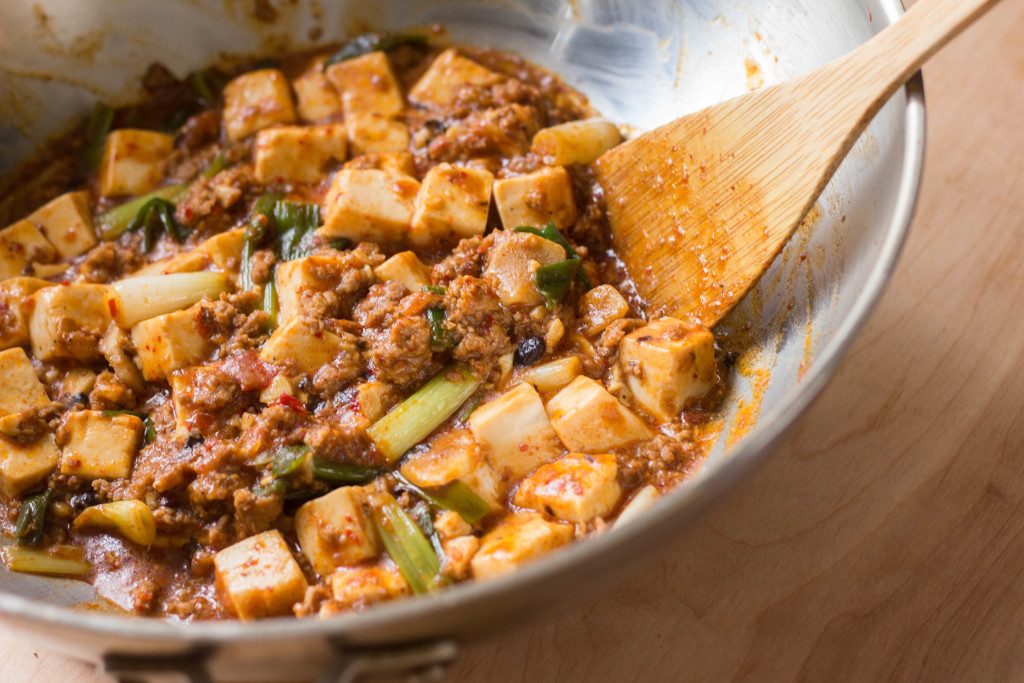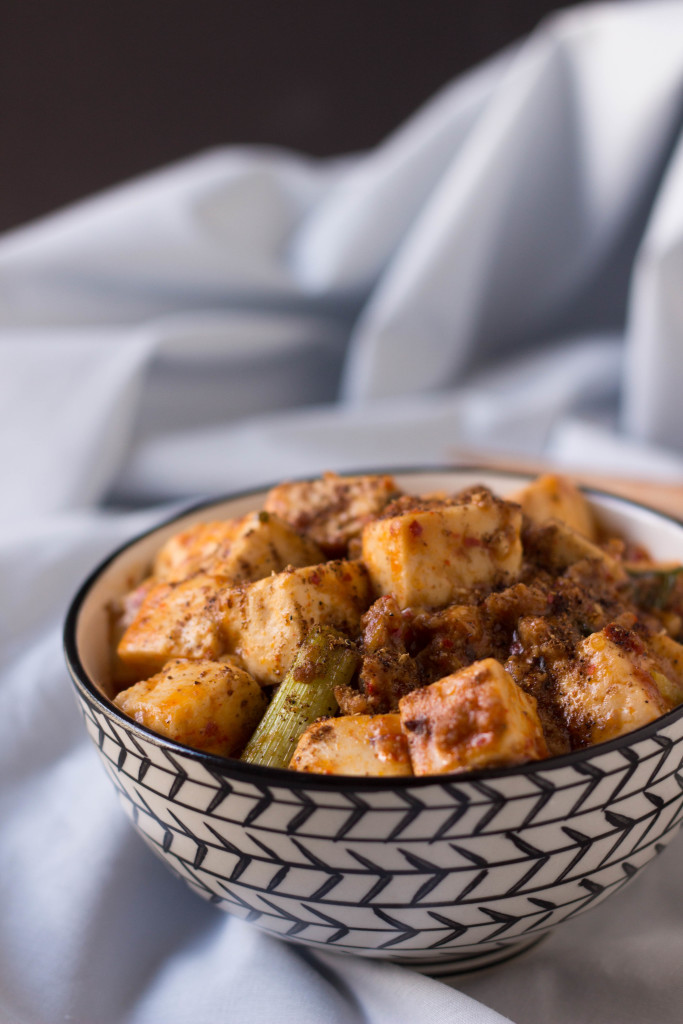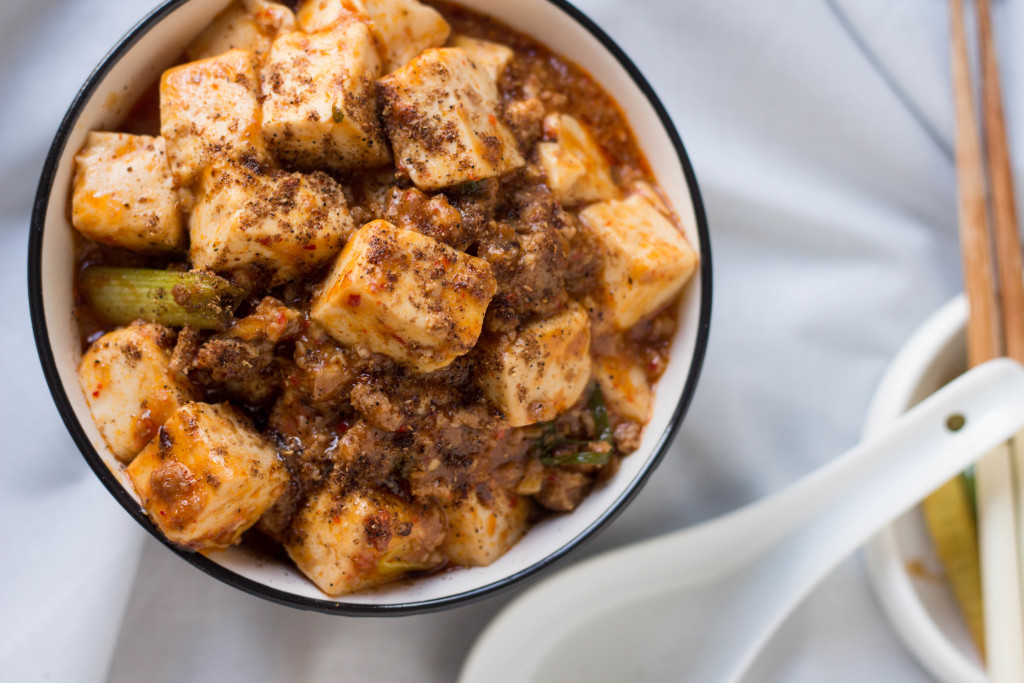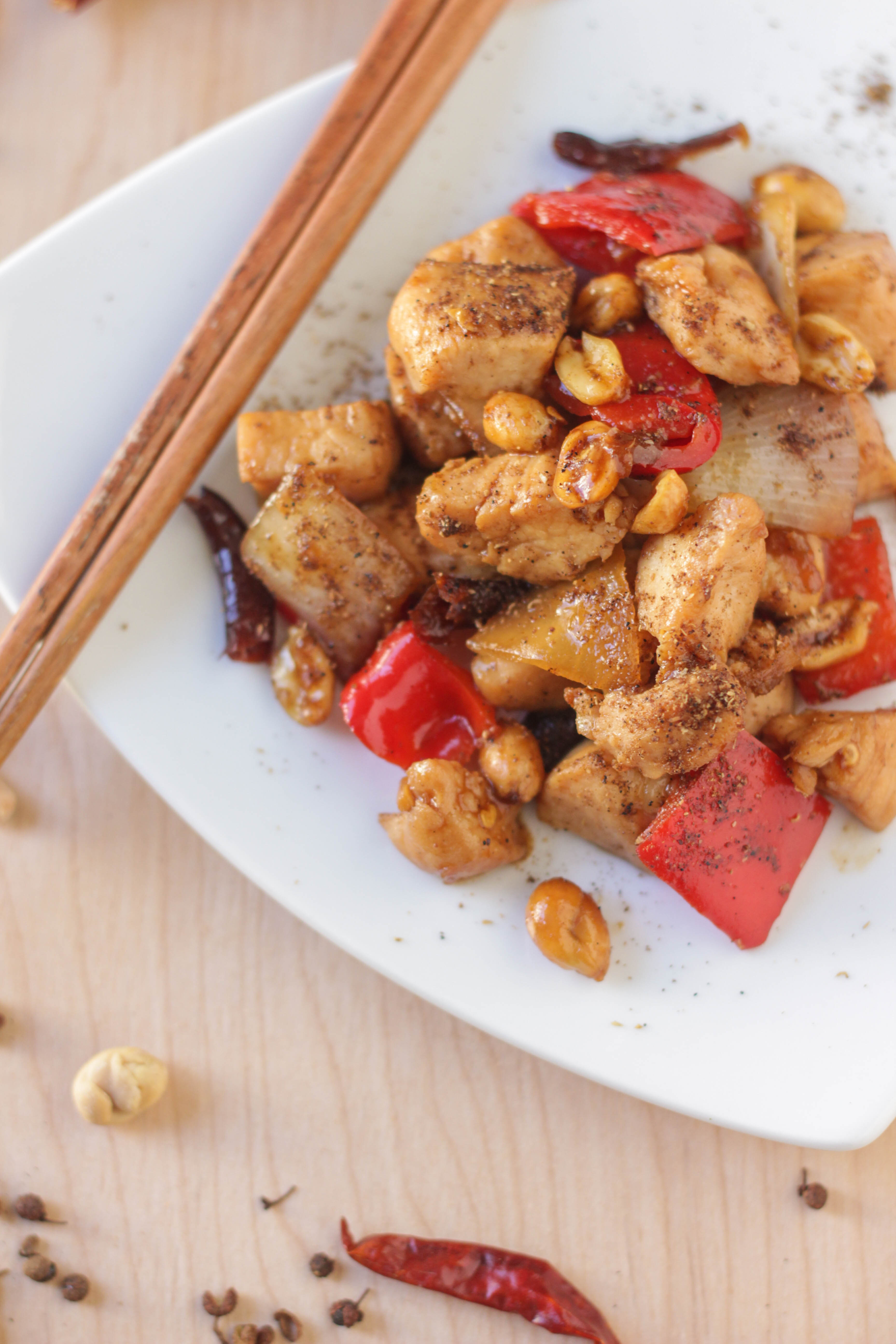Sichuan-style Mapo Tofu/麻婆豆腐 (Má Pó Dòu Fu)

This is my second in a series of Sichuan recipes–yes, I’m obsessed–and it’s a dish I’ve actually posted on here before, albeit a different style (Japanese-style, to be specific). So what’s the difference? Why post the same thing twice?
Sichuan mapo tofu has a heartier taste, with an emphasis on both the spiciness of the chili flakes and the numbing spiciness of the prickly ash. I might be biased, since I’m in the throes of passion for all things Sichuan right now, but I’m inclined to like this version of mapo tofu better… to each his own, though!

I’ve definitely been influenced by my first recipe, though–a lot of the Sichuan recipes I found online omit the garlic, ginger, or both. I am disinclined to leave out what I view as staple aromatics for Chinese cooking, so I decided to keep them as ingredients and use them in the same way I did for the Japanese recipe. And while recipes varied widely on the amount of ground meat used, I decided to stick to my guns and continue to use 5 oz. It’s just what we prefer at home–if you want to put more emphasis on the tofu, feel free to add less.

The most important part about cooking Sichuan food is making sure your ingredients are specifically from Sichuan or are Sichuan-style. Japanese and Korean stores both carry versions of doubanjiang and dou chi (spicy fermented bean paste and fermented black beans, respectively) but neither will have the same intense flavors that are so characteristic of Sichuan cooking. If you can, drop by your local Chinese market and look for these two ingredients. They are literally two of the cornerstones of Sichuan cooking, and are completely worth the search. (And while you’re at it, make sure you have Sichuan red peppercorns, okay? Remember how I mentioned that roasting and grinding them makes crack powder? Go get ’em!)
If you’re worried about the spice level, you can always dial back the amount of chili flakes you add in the recipe; the amount I’ve listed is moderately mild. If you’re crazy like me and James, you can always add more chili flakes and experience that numbing heat that makes Sichuan so addictive for us!


Sichuan-style Mapo Tofu/麻婆豆腐 (Má Pó Dòu Fu)
Description
Arguably one of the most famous exports from the Sichuan province of China. This dish definitely proves that tofu is an amazing ingredient in its own right!
Ingredients
Thickening Slurry
Instructions
-
Before you start cooking, wrap the block of tofu in a paper towel and allow it to sit while you do prep work (mincing, gathering ingredients, etc.)
-
Heat a wok or a large frying pan with 2 Tbsp. of cooking oil to medium heat.
-
When the oil is hot, add the minced garlic and ginger to the pan. Stir until aromatic, < 30 seconds, then add the ground meat.
-
Stir the ground meat until it’s fully cooked, then add the chili paste, black bean, and chili flakes.
-
Allow the bean/spice mixture to sizzle for about a minute while mixing into the ground meat, then add the chicken stock, soy sauce, and green onions. Turn the heat up to medium high. The liquid should start to boil.
-
While the liquid is boiling down, remove the tofu from the paper towel and slice into cubes that are no bigger than 3/4 inch.
-
Add the tofu to the wok and stir gently to mix.
-
Add the cornstarch and water–try adding half of the amount called for at first. Depending on how much your liquid has boiled down, you may not need all of it. It’s also a matter of preference… I like my sauce to be pretty thick so it coats the rice I eat it with, so I use the whole amount on the recipe.
-
After mixing the cornstarch & water into the dish, turn off the heat and remove from heat. Sprinkle with the ground roasted Sichuan peppercorns, then plate and serve immediately.
Note
- I prefer ground beef, but any ground meat will work.
- Douban jiang and dou chi are readily available at your local Asian supermarket in the sauces section.
- You can sub firm tofu for soft if needed, but it makes the dish much more tofu-forward (which sounds crazy, I know, but soft tofu just makes the whole thing taste more cohesive).
- Sprinkling the ground peppercorn at the end is optional, but it really elevates the flavor of the dish and I highly recommend it.



